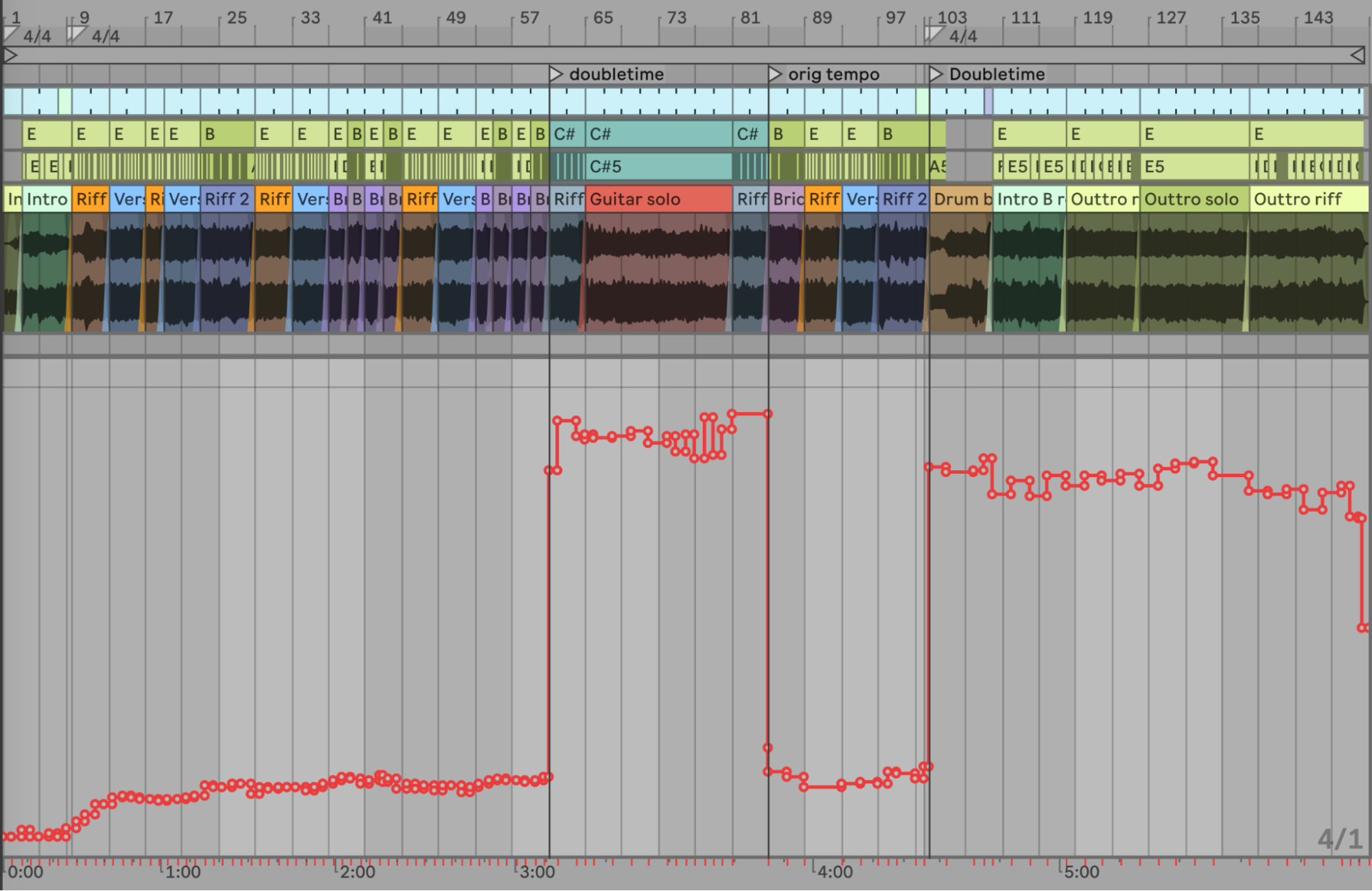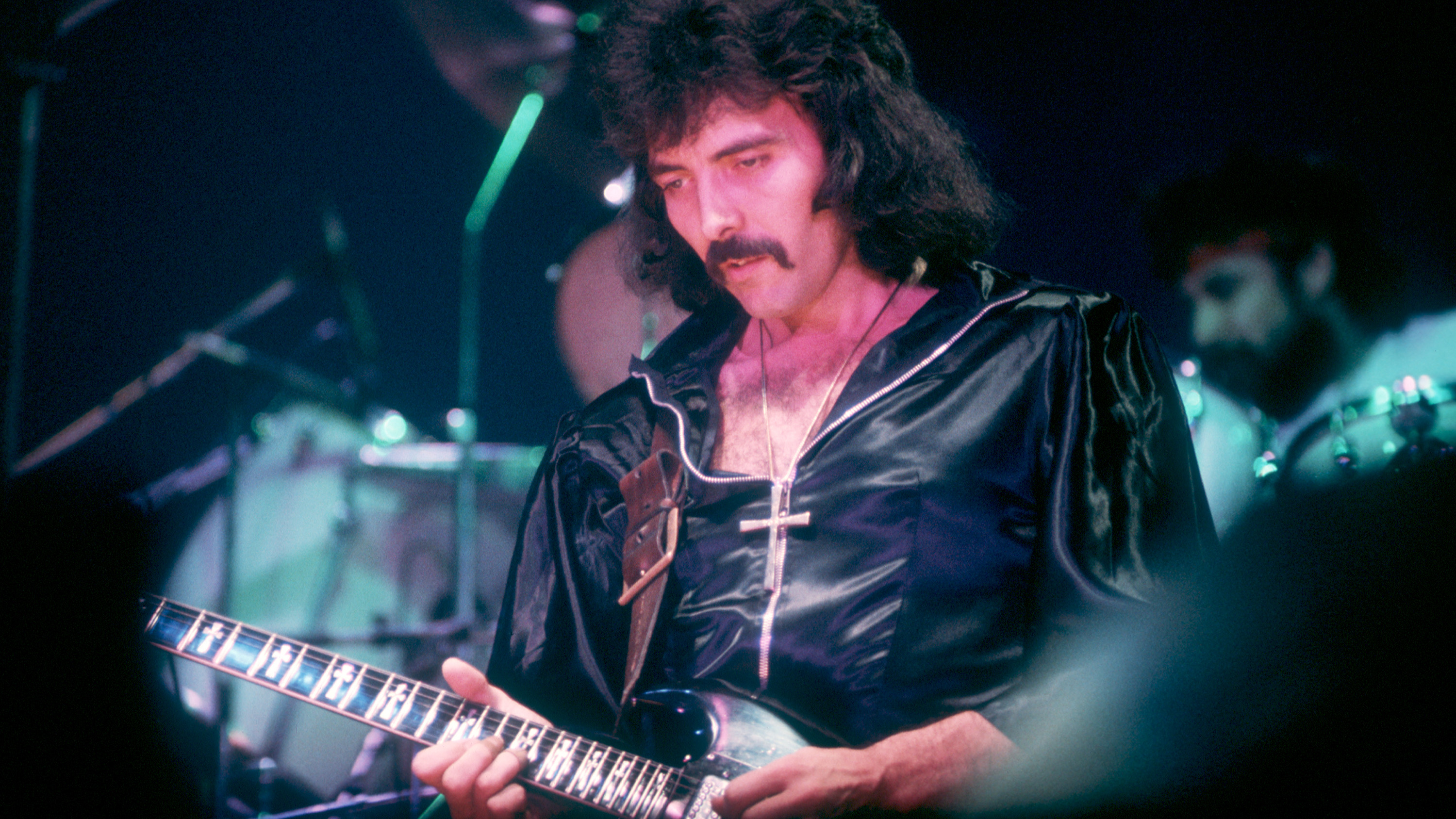“They were unfairly dismissed by critics and listeners with ‘good taste’ as mindlessly primitive”: A music professor breaks down the theory behind Black Sabbath's Iron Man
Following Ozzy's passing, we put one of Sabbath's best-loved tracks under the musical microscope

In memory of Ozzy Osbourne, we’re taking a look at one of the most iconic songs the Prince of Darkness ever recorded with Black Sabbath.
Iron Man is not named after the Marvel comic, which wasn’t available in the UK at the time that Sabbath wrote the song. (This hasn’t stopped Marvel from using it in movies and trailers.) Guitarist Tony Iommi came up with both the song’s intro part and the main riff while jamming over a simple thumping kick drum pattern played by Bill Ward.
Ozzy thought that the main riff sounded “like a big iron bloke walking about.” I don’t know that the song would have had the same impact if they had kept their original working title of Iron Bloke. Once they had settled on Iron Man, bassist Geezer Butler wrote the lyrics with that as a starting point.
Tony Iommi worked at a sheet metal factory as a teenager, and he lost the tips of his right middle and ring fingers in an accident. He’s left-handed, so he uses his right hand to fret guitar strings. Iommi was in despair after the accident until his factory foreman told him about Django Reinhardt, who played virtuoso jazz guitar with only two working fingers on his fretting hand.
Iommi was inspired to try playing again, but it was too painful to use his injured fingers. He briefly considered learning to play the guitar right-handed, but decided that it would take too long. Instead, he improvised prosthetic fingertips using melted plastic from a bottle of dish soap and strips from an old leather jacket, and has been using them ever since.
Iron Man has an unconventional form. Let’s talk through the sections in order.
0:00 - Intro A
Want all the hottest music and gear news, reviews, deals, features and more, direct to your inbox? Sign up here.
Bill Ward plays kick drum on the quarter notes, at a doomy 64 beats per minute.
0:07 - Intro B
Tommy Iommi bends the guitar’s low E string up to F-sharp, picks it, and releases slowly to E. This riff is overdubbed several times, and the woozy tuning rubs uncomfortably. Ozzy intones “I am Iron Man” through some kind of effect, though no one is clear on what it might be.
One story suggests that he was speaking through a metal fan, but while that would create the choppy tremolo, it wouldn’t add so much distortion. A more likely candidate is a ring modulator, the device originally used for Dalek speech on Doctor Who. The last time through the intro riff, it’s interrupted two beats early by…
0:27 - Main Riff
This is the one you think of as the “Iron Man riff”. It’s B, D, E, G and F-sharp. On its face, this pitch collection implies E minor, but the song doesn’t feel like straightforward minor to me, it feels more like E blues. It’s very cool that the tonic E doesn’t occur until the end of the phrase. The tempo has crept up to 70 beats per minute.
0:41 - Verse 1 (“Has he lost his mind?”)
The vocal melody is in unison with the main riff. This songwriting strategy is more characteristic of blues or R&B than rock of the time. The tempo climbs up to 75, where it stabilizes.
0:54 - Main Riff
Even though it’s instrumental, this riff is functioning the way that a chorus would in a normal song.
1:00 - Verse 2 (“Is he alive or dead?”)
The question “has he thoughts inside his head?” may well be Geezer Butler ironically referring to himself and his bandmates, because at the time, Black Sabbath were unfairly dismissed by critics and listeners with “good taste” as mindlessly primitive.
1:14 - Riff 2
This is where another “chorus” would typically go, but instead we’re treated to a new musical idea. The pitches are B, D, B, B-flat, A, G-sharp, A. If we’re still in E, then this implies E major/blues, but I hear it as being B Dorian mode with a chromatic connector between B and A.
1:32 - Main Riff
If the main riff is the “chorus”, maybe Riff 2 is the “prechorus”?
1:45 - Verse 3 (“He was turned to steel”)
This verse includes the astonishing revelation that Iron Man is a time traveler.
1:57 - Bridge 1 (“Nobody wants him”)
Some people consider this section to be the “chorus”. I don’t, because it’s too late in the song, and it only occurs twice in the song. At 2:03, there’s a new riff, which I call the Bridge Riff. It’s in B, like Riff 2. It uses B minor pentatonic with some chromatic connectors. The tempo has climbed up to 80 as the intensity builds.
2:22 - Main Riff
2:34 - Verse 4 (“Now the time is here”)
2:47 - Bridge 2 (“Nobody wants him”)
3:11 - Riff 3
You might expect the song to be coming to a close at this point, but instead we get another brand new musical idea. This riff is in a new key, C#, and it walks down the C# blues scale in a syncopated R&B-like rhythm. The tempo doubles to 160 bpm.
3:16 - Guitar Solo 1
Tony Iommi plays bluesy riffs while Geezer Butler hammers on a single note, C-sharp. The tempo is up to 170 bpm.
3:39 - Riff 3
The tempo hits its peak of 175 bpm.
3:45 - Bridge Riff
We’re back at the original tempo, around 78-80, and we return to the key of B.
3:57 - Main Riff
This is an interesting moment, because globally we’re shifting from the key of B back to E, which should feel like a conclusive V-I cadence. However, because the riff starts on the note B and doesn’t get to the note E until three beats in, the key change feels more gradual.
4:09 - Verse 5 (“Heavy boots of lead”)
4:22 - Riff 2
This would be another plausible end point for the song, but no, the riff is cut off two beats early by yet another new idea.
4:38 - Drum Break
We’re back in doubletime again, this time permanently. The tempo will hover around 155 until the end of the track. This break is seven measures long. After two bars, Geezer Butler enters, machine-gunning the note E.
4:48 - Intro B Reprise
Tony Iommi plays a doubletime version of that F-sharp to E bend-and-release riff from the beginning of the song. I appreciate this callback, because it gives the tune a narrative structure and keeps it from feeling like a string of unconnected riffs.
5:01 - Outtro Riff
You don’t usually introduce a new idea five minutes into your song. Sabbath is not prog metal, but this song’s structure does begin to point in that direction. The guitar riff centers around E, D, E and G, but the bassline descends chromatically: E to D to C-sharp to C. This implicitly creates the first actual chord progression in Iron Man: Em, D, C#m, C. These changes wouldn’t sound out of place in a Beatles song.
5:13 - Guitar Solo 2
Tony Iommi plays an overdubbed solo over the Beatles-y chords.
5:31 Outtro Riff
The riff repeats three times and ends on a button.
Should that last section, or group of sections, have a more specific name? Brad Osborn proposes the term “terminally climactic form” for songs like Hey Jude that end with new musical information, as opposed to the more typical situation where the song ends by repeating the chorus or some other familiar material.
Metal scholar and aficionado Garrett Schumann points out that 1970s metal is full of terminal climaxes, many of which are instrumental. It’s not unusual for a metal song to end with a guitar solo, but Iron Man’s climax is twice as fast as the main part of the song, with a new riff and new harmony, so it’s more structurally meaningful than just a solo. Perhaps “terminal climax” is the right word.
Something about Iron Man attracts improbable adaptations, like the jazz trio version by the Bad Plus. I love the intro on the horribly out-of-tune upright piano.
I also appreciate this bhangra version by Opium Jukebox.
I don’t know why William Shatner recorded a version, but he did.
Rappers love to quote and reference Iron Man. Here’s Sir Mix-a-Lot.
And here’s Busta Rhymes, accompanied by Ozzy himself.
Daft Punk even referenced Iron Man's bent-string riff and Dalek voice in The Brainwasher, from the album Human After All.
It makes sense that Iron Man appeals to musicians from so many different genres and eras, because the song itself transcends genres. I observed above that Iron Man’s riff-centric structure is more like blues or R&B than early '70s rock. I knew Sabbath by reputation long before ever listening to them, and when I finally did listen, I was very surprised how bluesy they sound.
You can hear their blues influence most clearly on The Wizard, Behind the Wall of Sleep and NIB. Iron Man has less obvious blues flavor, because blues songs don’t usually change key or tempo the way Iron Man does. Here’s a tempo map I made using Ableton Live.

Within each section, though, Iron Man does sound very bluesy. In fact, you could think of it as a collage of several different riff-based blues songs. It goes to show you that you don’t have to dig very deeply into any kind of rock before getting down to the bedrock of the blues.
Ethan Hein has a PhD in music education from New York University. He teaches music education, technology, theory and songwriting at NYU, The New School, Montclair State University, and Western Illinois University. As a founding member of the NYU Music Experience Design Lab, Ethan has taken a leadership role in the development of online tools for music learning and expression, most notably the Groove Pizza. Together with Will Kuhn, he is the co-author of Electronic Music School: a Contemporary Approach to Teaching Musical Creativity, published in 2021 by Oxford University Press. Read his full CV here.
You must confirm your public display name before commenting
Please logout and then login again, you will then be prompted to enter your display name.




